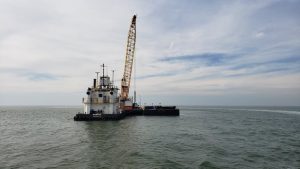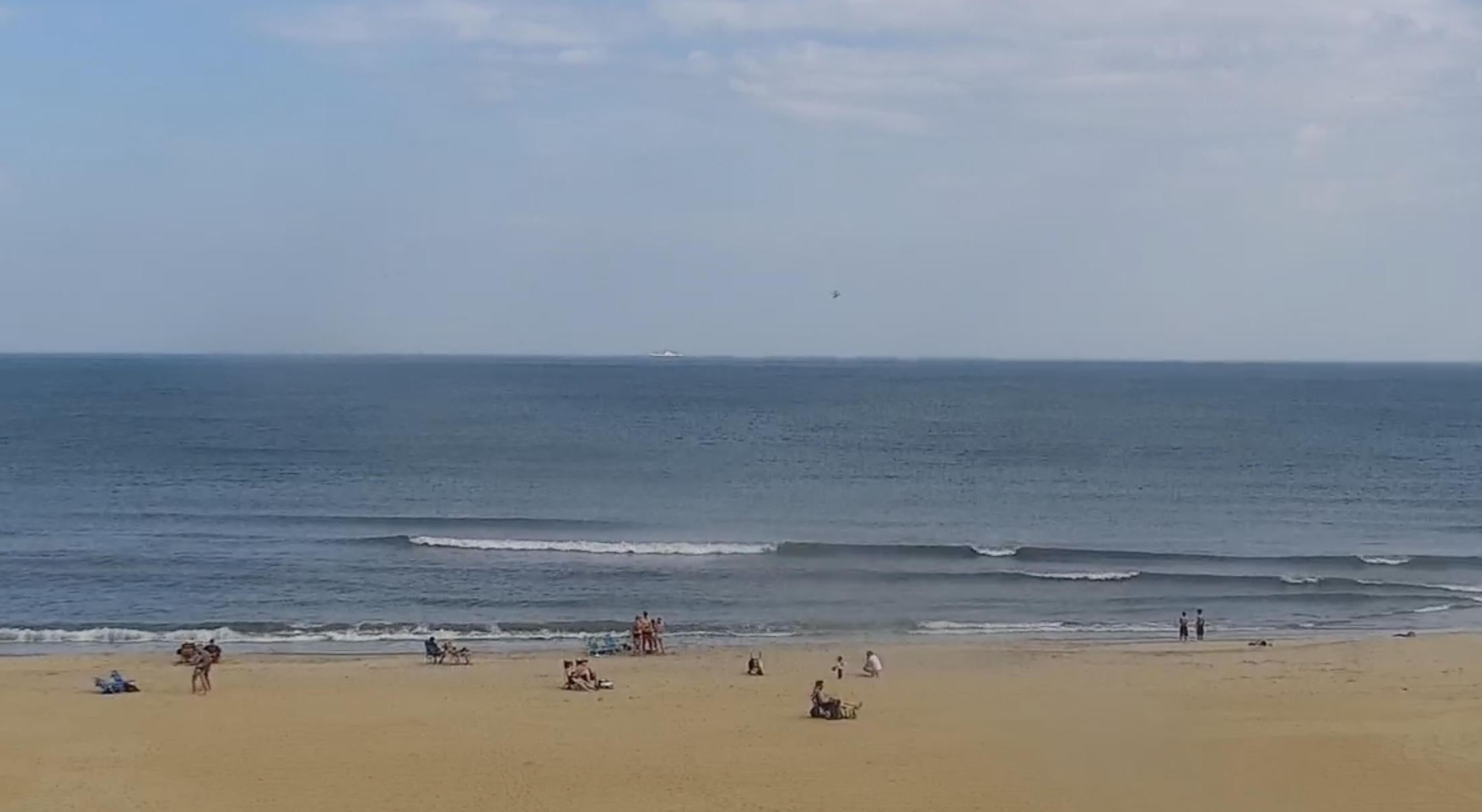
With three nasty winter storms in a row recently, it didn’t take long for the newly dredged area in South Ferry Channel to go from smooth sailing to impassable.
“It’s been really frustrating because it seems like this is the third consecutive winter I’ve had to abandon running charters in Hatteras because of shoaling in January and February,” Hatteras charter boat captain Brian Patteson told the Dare County Waterways Commission at its virtual meeting on Monday.
Channel depth is currently 3-4 feet. When it was initially dredged after Thanksgiving, it was about 100-150 feet wide and 6-7 feet deep.
But conditions in the inlet go beyond the channel being dangerous for charter and commercial fishing boat traffic.
“It’s actually the entrance [that] is getting worse,” Coast Guard Chief John Matuska of Station Hatteras Inlet told commissioners, referring to the southwest side of the channel. “At low tide, it’s probably going to hit 3 feet . . . We’re barely getting out small boats out without trimming up.”
Matuska said that he was forced to attempt to go through Ocracoke Inlet in the 47-foot rescue boat to respond to the plane crash in New Drum Inlet on Sunday afternoon.
“I probably had one of the worst nightmares of my career last night,” he said. “It’s pretty devastating to tell the Sector (North Carolina) ‘I can’t go . . . because I’ve got no way offshore with the 47.”
Ocracoke was passable in the Coast Guard’s small boat at high tide, Matuska said. “But on the way in, we hit bottom between (markers) 24 and 20-C Charlie, ripped the lower unit off the 29, brought it into Silver Lake and had to trailer back,” he said. “So we really do need to push the issue with South Ferry. It’s coming down to where it’s not good.”
In response, Commission Chairman Steve “Creature” Coulter confirmed with the chief that the last day the agile 47-foot rescue boat was able to go through Hatteras Inlet was around Jan. 24th.
“That’s correct,” Matuska said, clarifying that the boat got through the entrance to the channel. But then it got stuck on the shoal extending from the entrance, he added, resulting in $30,000 to $50,000 of damage to the rudder.
“So that’s the last time we went through,” he said. “And until we get a dredge, we’re not going to be able to get offshore at all in the 47. It’s not worth the chance.”
According to Coast Guard online information, the 47-foot motor lifeboat is built to respond quickly in high seas, surf and heavy weather. It can even right itself in 30 seconds if knocked over in rough seas. With electronically controlled engines, fuel management systems, and integrated electronics, the vessel “has the ideal platform for operations in extreme sea and weather conditions.”
It says something when even the tough and versatile rescue vessel can be undone by Hatteras Inlet shoaling.
In addressing upcoming dredging of Hatteras Inlet and Oregon Inlet with the sidecaster Merritt, Brennan Dooley with the U.S. Army Corps of Engineers told members that the Coast Guard’s input is important in determining scheduling because there’s a lot of need. Already, he said, work in Carolina Beach had to the delayed until March because the Corps had to do emergency dredging last week in the Rollinson Channel for the Hatteras-Ocracoke ferries.
“So a lot of people are hurting across the state and we hate it,” he said. “We can’t get to them all.”
Dooley said the Corps plans to discuss the Hatteras Inlet situation with the Coast Guard “in the next few days.”
Chiming in on the subject, Coast Guard Lt. Greg Kennerley with Sector North Carolina said that he has had numerous discussions with Matuska and others about the conflict in dredge scheduling.
“So I think right now, where we’re at is the high priority would be South Ferry Channel, and then Oregon Inlet would fall second,” he said.

In a later interview, Barton Grover, Dare County Grants and Waterways administrator, said that the Merritt would be expected to arrive in Hatteras by the first week of March, when the goal would be to dredge the channel to 8 feet deep.
“The hope is to get a 14-day event,” he said, referring to the length of the project.
Part of the problem with the earlier dredging project is that the last work in the channel at the end of December was supposed to last for seven days, but high winds forced the project to halt after only three days.
The state Department of Transportation also recently removed material from the ferry channel in a “bucket and barge” operation that transferred the sand to Ocracoke Island to replenish damaged sand dunes.
Meanwhile, the realignment of Rollinson Channel that would include the South Ferry Channel and Sloop Channel in the federal authorization is still being reviewed by the agencies, but it still expected to be finalized, likely by summer. The realignment would permit dredging all year, with some conditions, in the authorized area.
Grover also provided an update on the funds provided to the Corps from the Bipartisan Infrastructure Investment and Jobs Act. For fiscal year 2022, a total of $12 million was allotted for Dare County projects, including: Avon Harbor, $1.6 million for dredging and surveys; Manteo Shallowbag Bay (Wanchese to Oregon Inlet channels), $6.4 million for dredging and surveys; Rollinson Channel (Hatteras Inlet), $1.43 million for dredging, surveys, and monitoring; Stumpy Point Bay, $2.58 million for dredging, surveys, and monitoring.
The projects must be contracted before the end of the fiscal year on Sept. 30, Grover said.














